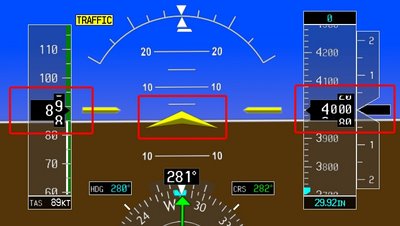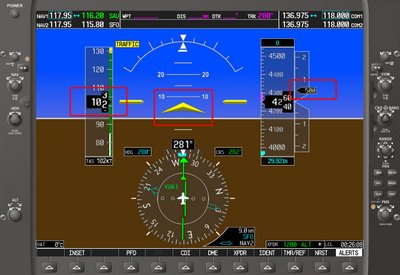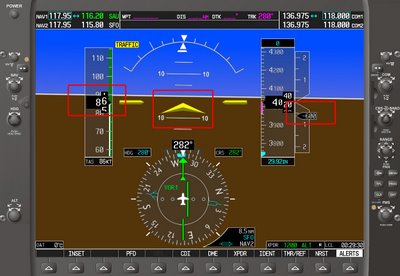I encourage pilots transitioning to a glass cockpit to concentrate on flying a specific attitude - just the opposite of what you might have learned to do in an older plane with a crappy, unreliable, vacuum-driven attitude indicator. Glass panel aircraft have very precise attitude indicators and with a little experimentation, you can derive a set of pitch attitudes and power settings that will give you the cruise, climb, or descent performance you want.
For example, when flying straight and level at a cruise power setting in a Cessna with a G1000, keep the yellow triangle and pitch bars right on the horizon.

At a slow cruise setting use for holding or approaches, set the power for the lower airspeed, then adjust the pitch so the yellow triangle is about 2˚ to 3˚ above the horizon.

To climb, pitch up about 8˚ and set climb power. You can fine tune the pitch attitude to get the speed tape to stabilize on your desired cruise speed.

During descent, set your descent power, then adjust the pitch attitude so the yellow triangle is no more than a 2˚ or 3˚ pitch down. If your airspeed is too high, remove some power. If the airspeed is too low, add some power. If you're descending on an instrument approach and there is descent angle listed, pitch for that angle on the attitude indicator.

A strategy for deriving the baseline power settings is to let the autopilot fly the plane straight and level, or in a foot-per-minute climb or descent, then notice what power settings and pitch attitudes give you the desired performance. Remember that these baseline pitch and power settings are a starting point, not absolute values set in stone. Adjust the settings to account for changes in density altitude and how heavily or lightly you have loaded the plane.
Baseline pitch attitudes and power settings will help you be less of a slave to the twitchy numbers on the tape displays. Changing your habit to focus on the attitude indicator in a glass panel aircraft may take some time, but results should be rewarding. Try it. I think you'll like it.












